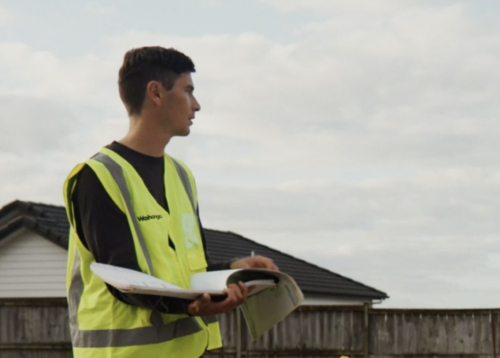Whether you’re a passionate foodie or simply love working with lots of people, starting up a café can be a rewarding pathway into self-employment. But some cafés are more successful than others. Why? Often because they got it right from the start.
Step 1: Understand the café opportunity in New Zealand
The NZ cafes and restaurants industry, aka hospitality sector, has been growing fast in the past five years. As New Zealanders get more disposable income, they’re eating out more often. The growth of casual eating is particularly apparent, because consumers want to eat out more frequently but spend less per meal.
The big challenges for cafes and restaurants are lack of skilled employees, managing wage costs, and building and maintaining sales.
According to a recent IBISWorld report, the key success factors for cafes and restaurants are:
- Having a good reputation
- Access to niche markets
- Pricing food and beverages appropriately
To get to grips with the New Zealand hospitality sector, the Restaurant Association has an excellent report about what’s going on.
Step 2: Location, location, location
The location of your café is crucial for its success. It needs to be compatible with your theme or concept, target audiences and practicalities, such as car parking, foot paths and public transport routes.
Use your common sense to analyse every aspect of your soon-to-be business’s physical location:
- Premises. Can the space hold enough customers to make your café profitable? Is the layout customer-friendly, or will staff be forever squeezing past? Are the existing fittings in good shape? What sort of money will need to be spent to upgrade the kitchen and/or toilets?
- Décor. How easily will the premises adapt to your proposed café theme? What will you need to spend on interior decorating? Is there any existing furniture?
- Street position. Are people walking past all the time or is the position a ‘destination café’, which will require customers to specifically drive to your location? Is there parking out front or nearby? What sort of businesses are next door? Where’s the nearest bus or train stop?
- Neighbourhood. Does the neighbourhood profile fit your customer target groups? What about the suburbs that are adjacent
- Competition. How many other cafés or eateries are in the area? How busy are they? What seems to be missing in the mix?
Step 3: Decide between franchise brand or original brand
There can be advantages to launching your café under a franchise brand. Much of the hard work will have been done for you, all the systems have been tried and tested, you get training and marketing support, and you know how much it’s all going to cost to get started.
However, starting your own café from scratch also has benefits. You have creative freedom with the concept, name, décor and menus. You don’t have to pay for existing ‘goodwill’ that comes with a franchise brand. And you won’t have to pay ongoing fees to franchise headquarters. It can also be argued that some consumers avoid visiting franchise cafes, because they lack the ‘cool factor’ of one-of-a-kind businesses.
Benefits of a franchise cafe
- Proven business model
- Training is part of the package
- Easier to get going
- Help when you need it
- Brand recognition in the market
- Profit forecasting, so you have an idea of when the business will become sustainable
Benefits of an original business
- You don’t have to pay for an existing business model
- You don’t have to pay for training
- Creative freedom to create your own brand
- The chance to do things your way
- A unique brand arouses more local curiosity
- You’re not sending a portion of your profits to a franchise HQ as ongoing fees
If you choose to go with an original brand business platform, there’s lots of scope to sculpt it in a way that will draw people in. For example, you could:
- Specialise in a specific type of food or coffee. For example, New York-style sandwiches and cold drip brews, tacos and smoothies, salad bowls and kombucha, tea and cupcakes. While it’s important that you love the style of food and drink you aim to serve, it’s even more important to make sure there’s a market for it. Think of the neighbourhood and what they’d like to consume at your café.
- Have a distinctive look and name. Maybe you’re not up to running a cat or lama café, but having a unique concept for your place will help to attract diners. You’ll find plenty of inspiration on Pinterest. Ask around your circle of friends for name ideas. Once you find a few you like, do name checks to see what’s available. The NZ government’s One Check website makes this easy.
- Choose a service style. You can be quite innovative with how orders are placed and delivered. For example, you could use a smartphone app, menu tablet or wireless pagers that let customers know their food is ready. Or you could keep it simple with counter ordering and paying.
Step 4: Cafe business plan
Every start-up business needs a business plan, especially if you’ll be applying for a business loan or seeking investors. Exactly how detailed your plan needs to be will depend on whether you’re opening a franchise café or an original concept café.
If you’re going the franchise way, the master franchisor will probably help you to write a business plan or put you in touch with someone who can help. If you’re creating your café brand from the ground up, you might want to involve a business consultant or enlist a friend who runs a successful business.
A business plan should start with an executive summary of your proposed business. This is the ‘barbecue pitch’ that explains the what, where, when, why and how of your café start up.
Then you need to go into detail about every aspect of the business.
- Market opportunity
- Target audiences
- Location
- Premises
- Competition
- Concept
- Unique selling proposition
- Food and beverage offering
- Staff required
- Cost of start up
- Income forecasts for the first year
Anything else that is relevant to the setting up and ongoing operation of your café business
Step 5: Create customer personas
Spend a bit of time sitting in a neighbourhood café that might attract the same people you’re targeting. Notice who’s coming and going, then create a customer persona for each of the groups you want to target.
Every persona should be detailed. Give them a name, gender, age, job, income, address, family status and hobbies. Find pictures of what they look like and think about the things they aspire to. Also think about the challenges that each persona faces, i.e. short on time, short on money, concerned about health.
Cafés generally attract local people, so make sure you target people who actually live in your area. Also make sure they represent a large enough group in society. There’s no point targeting folk-music-loving vegan families if these people don’t live or work near your café.
Step 6: Get a handle on all the costs
Before you take the big leap into opening a café, have your eyes wide open for cost creep. The smartest way to avoid financial shocks is to draw up a comprehensive budget that thinks of absolutely everything. And always include a contingency for unexpected expenses, like getting the sink drain unclogged, repairing a dishwasher or replacing old flooring.
Your budget should include:
- Building rental – initial deposit as well as monthly rent payments.
- Décor updates – paint, flooring and wall art.
- Furniture – tables, chairs and high chairs (if you want to be kid-friendly).
- Kitchen updates – work surfaces, equipment, tools, appliances, cookware and serve ware.
- Staff – wages, uniforms and training.
- Utilities – gas, water and power.
- Stock – products made by others that you’ll on-sell, ingredients for making products on your premises, coffee beans and bottled drinks.
- Crockery and cutlery – cups, saucers, mugs, plates, knives, forks and all the other things customers need to consume your products.
- Music – all businesses that play music — from cafes, bars and nightclubs to stores, offices, gyms and hairdressers — need permission from music creators to use their music. Go to OneMusic to find out what you need to do.
- Insurance - Not sure what insurance you need? See our hospitality cover page for insurance options related to the sector.
Step 7: Just do it!
Once you’ve done all the thinking and planning, it’s time to seize your opportunity and steer it towards the café hall of fame. If the numbers stack up and the market’s busting for an establishment like yours, the only thing stopping you will be fear. That’s perfectly reasonable, because anything worth doing usually comes with a bit of anxiety.
It can be helpful to have supportive people around you during the start-up phase, so consider joining a business networking group or the Restaurant Association of New Zealand.
You might also like...
-
 March 2023Business Blog | State Insurance
March 2023Business Blog | State InsuranceThe pitfalls and dangers of running a business
-
 March 2023Business Blog | State Insurance
March 2023Business Blog | State InsuranceHow to grow a business and take risks
-
 October 2022Business Blog | State Insurance
October 2022Business Blog | State InsuranceSmall Biz Support
